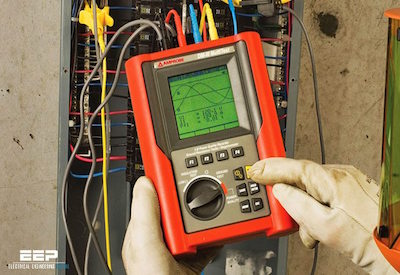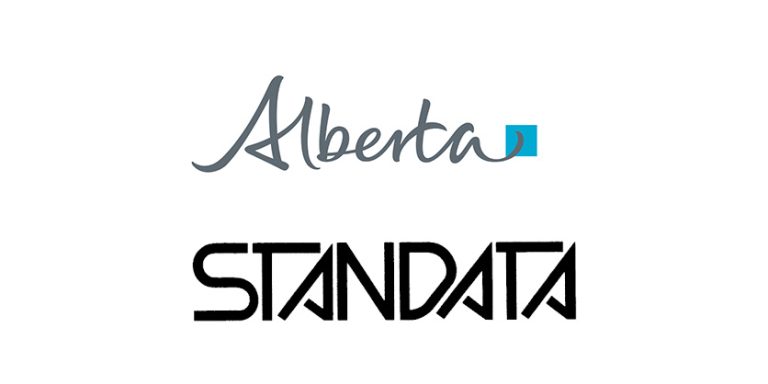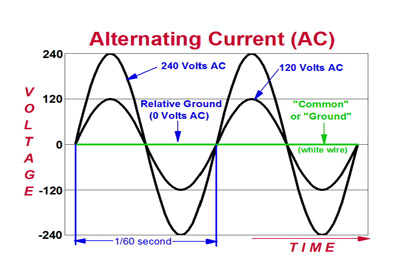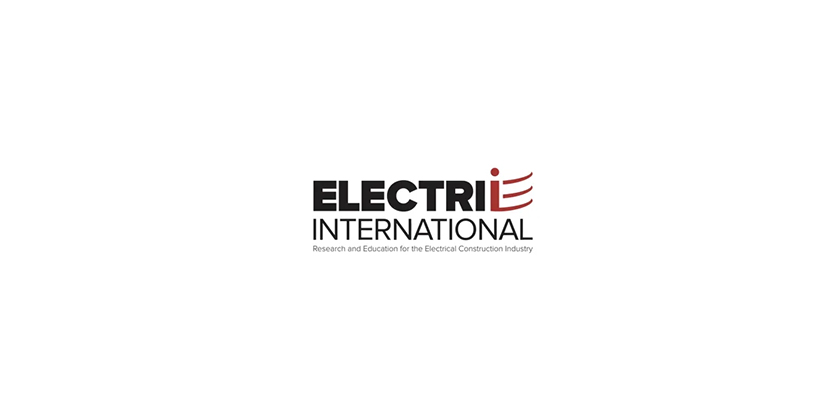Electrical Energy Storage

May 28, 2018
By Owen Hurst
Power quality has always been a concern for the electrical industry, and as we have become utterly reliant on uninterrupted power the issue of maintaining demand levels has become increasingly present. It is essential that power remain consistent and available particularly in the event of a disruption in power generation.
Many of us can recall the issues presented by the 2003 blackout, and we all know how troublesome even small power outages can be, especially if they occur in the dead of winter. There are a number of solutions that have been developed but here I would like to take a closer look at the options presented by electrical energy storage (EES). Energy storage is very promising for ensuring power quality during peak hours as well as for the integration of renewable energy sources into the grid and use at the personal level and can present options if issues arise at power generation facilities. At the very least they can offer a window of opportunity for a solution to any power issues to be implemented.
Further to the point the development and implementation of power quality methods such as EES must consider that inexpensive and reliable power is an essential component of economic development, particularly as the global demand for electricity has been projected to double by the year 2050.
To this point EES may be the optimal solution, particularly as use of renewable energy sources continues to rise. Historically, large scale EES has not been seen as a viable option as the available technology was expensive and often required substantial physical space to operate. As such it was more cost-effective to simply expand power generation and the transmission and distribution networks to meet customer demand and peak load. With the amount of power now being consumed and with a substantial global push for energy efficiency, this option no longer carries the lustre it once did.
Although the need is prevalent and new technologies are becoming available, some utilities have hesitated to undertake projects involving EES. According to the Centre for Climate and Energy Solutions, as of September 2017 the global capacity for electrical storage was 176 GW, less than 2% of the world’s total electric power production. Although the amount of energy storage seems quite low it reflects a growing industry trend toward implementation of large scale EES, particularly as further advancements are made to existing and new energy storage options.
Below we briefly discuss EES options that are currently being developed and implemented around the globe for both large scale and personal energy storage.
The most common EES, and one that is highly cost effective and long lived is pumped hydro. Pumped hydro uses off-peak energy to pump water from a low-level reservoir to a second reservoir at a higher elevation. When demand increases (on peak) water is released from the upper reservoir through a hydroelectric turbine to the lower reservoir, thus generating the additional needed power in a manner similar to a hydropower plant. Pumped hydro plants are being used more than any other energy storage option as a result of low cost and long life. In the U.S. more than 90% of energy storage capacity is pumped hydro. However, it requires substantial space to operate and its future viability is being reconsidered, particularly with the rise of renewables and new potentials with nuclear energy.
Another interesting option that has been identified is compressed air energy storage (CAES). With this option, off-peak power is used to compress air and store it, either in an underground cavern or an above ground reservoir such as pipes or vessels. When additional power is needed the compressed air is heated, causing expansion before the air is directed through a turbine generator to produce the peak load demand. CAES has not received international roll out, but two first generation systems have been implemented in Germany and the U.S., and second-generation units are also now being deployed. One unique benefit of the second-generation systems is a concept called adiabatic compressed air energy storage (A-CAES). In this case little to no fuel is consumed in the process; rather, the heat needed for the expansion process is trapped during the compression process. There is great potential for CAES, and we anticipate seeing the new development in this technology in the years to come.
Thus far we have considered two options that provide a means for storing potential energy, but not devices which physically store energy that has already been generated. For this we must turn to developments being made on a wide range of battery options, which in recent years have begun to have potential implications for utilities. Even more advantageous is their potential for energy storage with the rising tide of renewable energy generation, “their compact size makes them well suited for use at distributed locations, and they can provide frequency control to reduce variations in local solar output and to mitigate fluctuations at wind farms.”
Below we will consider the primary contenders for widespread use as EES units that have the potential to alleviate power quality concerns.
We cannot consider batteries without first discussing the most common battery in use, the lead-acid battery. Lead-acid is the most mature rechargeable battery technology available with a wide range of uses. However, it has not been widely adopted or considered for use in utility applications as a result of its heavy weight, size and issues with its life cycle. However, there are a number of advances being made for peak shaving, frequency regulation, wind integration, photovoltaic smoothing and automotive applications.
One battery that has received additional attention are sodium-sulphur batteries (NaS). NaS batteries “are a commercial energy storage technology finding applications in electric utility distribution grid support, wind power integration, and high value service applications on islands.” Na-based batteries are not new and can be traced back to the 1960s, when researchers at Ford discovered that sodium β-alumina had a high ionic conductivity for Na ions.
NaS batteries have been commercialized since 2002 in Japan where they are primarily used for utility-based load-levelling and peak shaving. “Among the advantages identified for stationary storage are its relatively small footprint (a result of high energy density), high coulombic efficiency, cycling flexibility and low maintenance requirements.”
There have also been developments with NA-nickel chloride batteries that also use β-alumina as the conducting membrane, and though their primary potential has been for use in electric vehicles utility applications are possible.
Another popular type that has received attention are redox-flow batteries. These have been around since the 1970s, and a number of different versions have been tested including iron/chromium, vanadium/bromine, bromine/polysulfide, zinc-cerium, zinc/bromine and an all vanadium to name but a few. The all vanadium redox-flow battery is the most mature of the flow batteries. Flow batteries store energy as charged ions in two separate tanks of electrolytes, with one side storing electrolyte for positive electrode reaction and the other storing negative. The appeal of the all vanadium battery is the use of one common electrolyte, which has the potential for increased life cycle. Although not widespread, a number of vanadium redox systems have been deployed, including locations in Denmark, U.S., Tasmania and Japan.
Vanadium redox flow energy storage systems have an expected lifetime of roughly 15 years, and have been recorded as having “achieved cycling capability of 10,000 or more cycles at 100% depth of discharge.” The primary setback is that the systems tend to be large due to the large volumes of electrolyte required for utility scaled systems.
One final battery we will consider is the rapid rise in the use of lithium-Ion (Li-ion) batteries. Rechargeable Li-ion batteries are widely used in consumer electronics, largely due to their compact size and relatively long life cycle. Beyond small electronics Li-ion batteries have seen intense research and applications for use in plug-in hybrid electric vehicles (PHEVs) and all-electric vehicles (EVs). However, Li-ion does have several potential avenues that could support power quality issues through implementation in grid-support applications such as transportable systems for grid support, commercial end-user energy management, home back-up energy management systems, frequency regulation and wind and photovoltaic smoothing.
So, point in fact EES has a substantial amount of potential for alleviating power quality concerns. In fact, an EPRI study “identified a number of high-value opportunities for energy storage, including wholesale energy services, integration of renewables, commercial and industrial power quality and reliability, transportable systems for transmission and distribution grid support and energy management.”
The future will determine the level to which EES is utilized globally, but we can be assured that advancements in energy storage will play a major role, alongside considerations of installation costs, high durability and reliability, long life and efficiency.
Owen Hurst is Managing Editor of EIN’s sister publication, Panel Builder & Systems Integrator: http://panelbuildersystemsintegrator.ca
Photo source: www.solarprofessional.com
Sources
Bruce Dunn, Haresh Kamath and Jean-Marie Tarascon, “Electrical Energy Storage for the Grid: A Battery of Choices,” Science, New Series 334 (6058), Nov 2011. Pp.928-935
https://www.c2es.org/content/electric-energy-storage/
EPRI, Electricity Energy Storage Technology Options, A Whitepaper Primer on Applications, Costs, and Benefits. Dec 2010, http://large.stanford.edu/courses/2012/ph240/doshay1/docs/EPRI.pdf

















